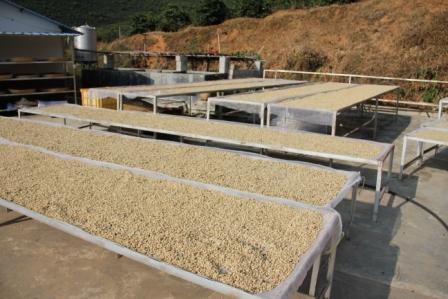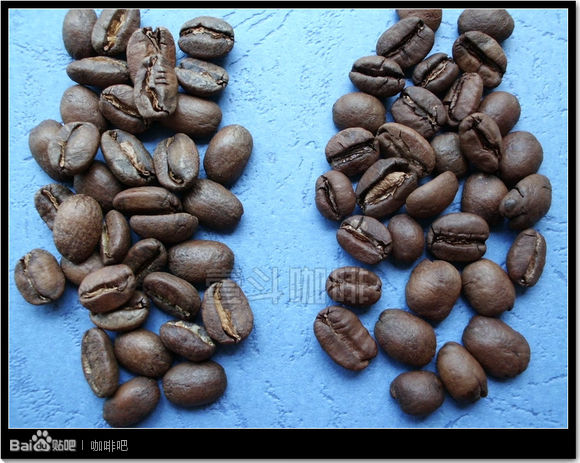Coffee three native species Arabica species: Ethiopia 90+levelup Flower language Sunlight Sidama
Coffee belongs to the evergreen shrub of the genus Rubiaceae, which is centered in the tropics. There are about 6000 species of Rubiaceae belonging to 500 genera. Coffee has always been considered to have certain effects, such as invigorating the stomach, waking up the brain, stopping bleeding, dissipating heat, strengthening the body and so on. There are about 40 species of coffee plants, but the only ones that can produce coffee beans of commercial value are Arabica, Robusta and Liberian. these three species are called the "three native species of coffee".
Arabica species:
The origin of Arabica species is the Abyssinia Plateau of Ethiopia (now the Ethiopian Plateau). It developed the habit of baking and drinking in the 13th century and was introduced into Europe from the Arab region in the 16th century. it has become a favorite drink all over the world.
Arabica coffee accounts for 75% of all coffee, accounting for 80%. It has excellent flavor and aroma, making it the only coffee that can be drunk directly among these native species. But its resistance to dryness, frost, diseases and insect pests is too low, especially the natural enemy of coffee-leaf rust. Sri Lanka is a case in point. Sri Lanka used to be a well-known coffee producer, but coffee farms were not spared by leaf rust at the end of the 19th century. Since then, Sri Lanka has turned to the development of black tea industry, and the same list of black tea estates as India.
Arabica coffee beans are mainly grown in South America (except parts of Argentina and Brazil), Central America, Africa (Kenya, Ethiopia, etc.), Asia (including parts of Yemen, India and Papua New Guinea).
Robusta species:
The leaf rust-resistant varieties found in Congo in Africa have stronger disease resistance than Arabica. In fact, the Robusta species was originally a mutant of the Congolese species.
Arabica coffee beans grow in the cold tropical high-sea areas, and the high-temperature and humid zone that is not suitable for Arabica coffee is where Robsta coffee grows. Robusta species are commonly used in instant coffee (which extracts about twice as much liquid as Arabica), bottled coffee, liquid coffee and other industrial coffees. The content of caffeine is about 3.2%, much higher than 1.5% of Arabica species.
The main producing countries are Indonesia, Vietnam and West Africa with C ô te d'Ivoire, Algeria and Angola as the center.
Liberian species:
West Africa is the origin of coffee grown in Liberia. It has a strong ability to adapt to all kinds of environments, whether high or low temperature, humid or dry, except that it is not resistant to leaf rust and its flavor is worse than that of Arabica, so it is only traded in some West African countries (Libya, C ô te d'Ivoire, etc.). Or planted for research.
About 65% of the coffee in circulation in the world market is Alibika:
According to the statistics of ICO (International Coffee Organization), excluding the domestic transactions of coffee-producing countries, about 65% of the coffee in circulation in the world market is Arabica and 35% is robusta. Arabica species are characterized by slender and flat grains, while robusta coffee beans are more round.
But if you add in the hybrids of Arabica and robusta (for example, the mutant Colombian subspecies, which is the main variety of Colombian coffee, has a 1x4 robusta pedigree and is therefore resistant to leaf rust and has high yield) and its mutant secondary coffee beans, the classification will be more complicated. Some Arabica coffee beans are quite close to the native species, while others are similar to the Robusta species.
Ninetyplus is an internationally renowned coffee bean production and sales company, and is famous for providing rare and unique raw coffee beans. JosephBrodsky officially founded Ninetyplus in 2007, and since the next year, we can see traces of Ninetyplus winning awards in coffee competitions, large and small, all over the world.
Of the six finalists in last year's 2013 WBC World Barista Competition, contestants from Italy, South Korea and Canada used Ninetyplus raw beans. Exquisite cultivation and processing of raw beans, excellent coffee varieties and unique grading system make Ninetyplus a top and unique representative of raw beans in the market.
ProfileProcessing system:
Develop a ProfileProcessing system for each bean tailored, planting, harvesting, processing and other processes, and through a cup test and correction, exactly let each bean, give play to its unique fruit flavor.
Ninetyplus unique flavor classification, password classification:
NinetyPlus coffee is classified according to "fruit flavor intensity", which is different from the traditional classification of Washed, Honey and Natural. It also has three items W2, H2 and N2, but the fruit flavor grades created by different treatments are different, so you may drink sun-treated or water-washed coffee beans in the classification of honey flavor "H2".

Important Notice :
前街咖啡 FrontStreet Coffee has moved to new addredd:
FrontStreet Coffee Address: 315,Donghua East Road,GuangZhou
Tel:020 38364473
- Prev

National coffee origin Guatemala Vivetnam Fruit producing area Coffee Bean boutique Guatemala Horse
Guatemala, which is famous for its highland topography, has a unique flavor of high-altitude hard beans that perform well in all-inclusive coffee producing areas and produce high-quality coffee with eye-catching performance. Guatemalan coffee has rich flavor changes and strong acidity, and sometimes can feel some changes in spices, from medium to full consistency, high complexity, is the best representative of complex style.
- Next

China Coffee Network recommends boutique coffee rose summer history Panama rose summer vs Ethiopia rose summer origin
Panama Rose Summer vs Ethiopian Rose Summer original species: the same rose summer bean species, the former has a strong rose oolong tea aroma and sweet taste, while the latter is naturally ripe full-sun treatment with obvious fermented wine flavor and local flavor. The species of Geisha was discovered in the rose forest of Ethiopia in 1931 and sent to the Coffee Institute in Kenya.
Related
- Detailed explanation of Jadeite planting Land in Panamanian Jadeite Manor introduction to the grading system of Jadeite competitive bidding, Red bid, Green bid and Rose Summer
- Story of Coffee planting in Brenka region of Costa Rica Stonehenge Manor anaerobic heavy honey treatment of flavor mouth
- What's on the barrel of Blue Mountain Coffee beans?
- Can American coffee also pull flowers? How to use hot American style to pull out a good-looking pattern?
- Can you make a cold extract with coffee beans? What is the right proportion for cold-extracted coffee formula?
- Indonesian PWN Gold Mandrine Coffee Origin Features Flavor How to Chong? Mandolin coffee is American.
- A brief introduction to the flavor characteristics of Brazilian yellow bourbon coffee beans
- What is the effect of different water quality on the flavor of cold-extracted coffee? What kind of water is best for brewing coffee?
- Why do you think of Rose Summer whenever you mention Panamanian coffee?
- Introduction to the characteristics of authentic blue mountain coffee bean producing areas? What is the CIB Coffee Authority in Jamaica?

